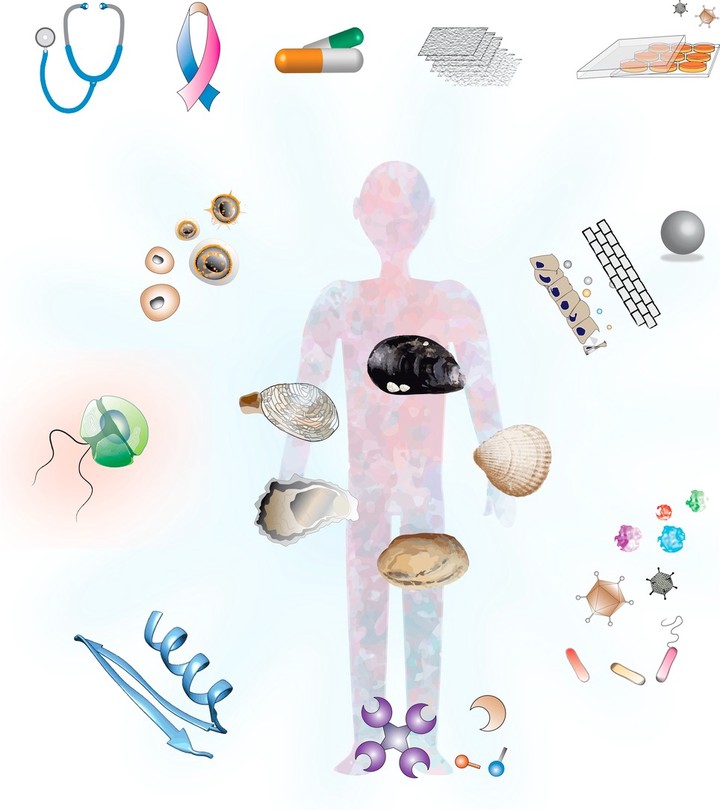
Abstract
Bivalves, from raw oysters to steamed clams, are popular choices among seafood lovers and once limited to the coastal areas. The rapid growth of the aquaculture industry and improvement in the preservation and transport of seafood have enabled them to be readily available anywhere in the world. Over the years, oysters, mussels, scallops, and clams have been the focus of research for improving the production, managing resources, and investigating basic biological and ecological questions. During this decade, an impressive amount of information using high-throughput genomic, transcriptomic and proteomic technologies has been produced in various classes of the Mollusca group, and it is anticipated that basic and applied research will significantly benefit from this resource. One aspect that is also taking momentum is the use of bivalves as a model system for human health. In this review, we highlight some of the aspects of the biology of bivalves that have direct implications in human health including the shell formation, stem cells and cell differentiation, the ability to fight opportunistic and specific pathogens in the absence of adaptive immunity, as source of alternative drugs, mucosal immunity and, microbiome turnover, toxicology, and cancer research. There is still a long way to go; however, the next time you order a dozen oysters at your favorite raw bar, think about a tasty model organism that will not only please your palate but also help unlock multiple aspects of molluscan biology and improve human health.
Robledo, J.A.F., Yadavalli, R., Allam, B., Pales-Espinosa, E., Gerdol, M., Greco, S., Stevick, R.J., GómezChiarri, M., Zhang, Y., Heil, C.A. and Tracy, A.N. (2018). From the raw bar to the bench: Bivalves as models for human health. Developmental & Comparative Immunology 92, 260-282. doi:10.1016/j.dci.2018.11.020.